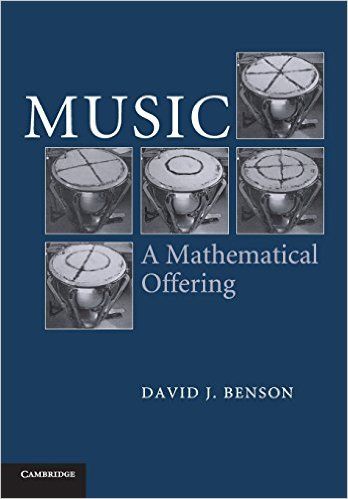
Preface
Acknowledgements
Introduction
Waves and harmonics
1.1 What is sound?
1.2 The human ear
1.3 Limitations of the ear
1.4 Why sine waves?
1.5 Harmonic motion
1.6 Vibrating strings
1.7 Sine waves and frequency spectrum
1.8 Trigonometric identities and beats
1.9 Superposition
1.10 Damped harmonic motion
1.11 Resonance
Fourier theory
2.1 Introduction
2.2 Fourier coefficients
2.3 Even and odd functions
2.4 Conditions for convergence
2.5 The Gibbs phenomenon
2.6 Complex coefficients
2.7 Proof of Fej6r's theorem
2.8 Bessel functions
2.9 Properties of Bessel functions
2.10 Bessel's equation and power series
2.11 Fourier series for FM feedback and planetary motion
2.12 Pulse streams
2.13 The Fourier transform
2.14 Proof of the inversion formula
2.15 Spectrum
2.16 The Poisson summation formula
2.17 The Dirac delta function
2.18 Convolution
2.19 Cepstrum
2.20 The Hilbert transform and instantaneous frequency
A mathematician's guide to the orchestra
3.1 Introduction
3.2 The wave equation for strings
3.3 Initial conditions
3.4 The bowed string
3.5 Wind instruments
3.6 The drum
3.7 Eigenvalues of the Laplace operator
3.8 The horn
3.9 Xylophones and tubular bells
3.10 The mbira
3.11 The gong
3.12 The bell
3.13 Acoustics
4 Consonance and dissonance
4.1 Harmonics
4.2 Simple integer ratios
4.3 History of consonance and dissonance
4.4 Critical bandwidth
4.5 Complex tones
4.6 Artificial spectra
4.7 Combination tones
4.8 Musical paradoxes
5 Scales and temperaments: the fivefold way
5.1 Introduction
5.2 Pythagorean scale
5.3 The cycle of fifths
5.4 Cents
5.5 Just intonation
5.6 Major and minor
5.7 The dominant seventh
5.8 Commas and schismas
……
6 More scales and temperaments
7 Digital music
8 Synthesis
9 Symmetry in music
Appendix A Bessel functions
Appendix B Equal temperde scales
Appendix C Frequency and MIDI chart
Appendix D Intervals
Appendix E Just,equal and meantone scales comparde
Appendix F Music theory
Appendix G Recordings
References
Bibliography
Index
Since the time of the Ancient Greeks, much has been written about the relation between mathematics and music: from harmony and number theory, to musical patterns and group theory. Benson provides a wealth of information here to enable the teacher, the student, or the interested amateur to understand, at varying levels of technicality, the real interplay between these two ancient disciplines.
The story is long as well as broad and involves physics, biology, psychoacoustics, the history of science, and digital technology as well as, of course, mathematics and music. Starting with the structure of the human ear and its relationship with Fourier analysis, the story proceeds via the mathematics of musical instruments to the ideas of consonance and dissonance, and then to scales and temperaments. This is a must-have book if you want to know about the music of the spheres, digital music, and many things in between.
希望发布您的读后感或评论?请先登录那熊账号